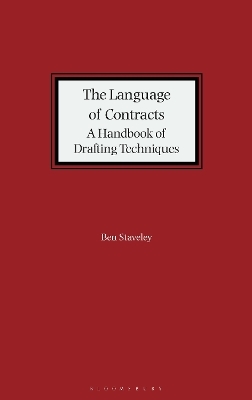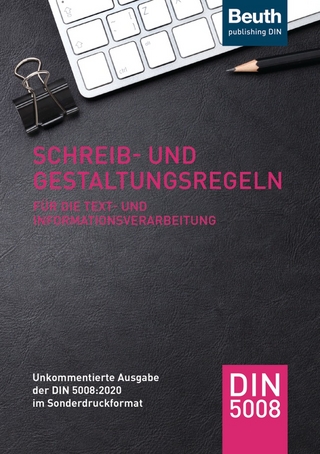
The Language of Contracts
A Handbook of Drafting Techniques
Seiten
2024
Bloomsbury Professional (Verlag)
978-1-5265-3030-1 (ISBN)
Bloomsbury Professional (Verlag)
978-1-5265-3030-1 (ISBN)
- Titel nicht im Sortiment
- Artikel merken
How can drafters of English law contracts use language to insulate their contracts from the risk of an embarrassing and expensive dispute?
This book aims to answer that question. It helps drafters to be clear at every level: to reflect a logical structure, to make clear how provisions work coherently alongside one another, and to make the intended meaning of the contract language so clear that no party could be tempted to argue that it means something else.
Besides illustrating technical drafting techniques, the book prompts drafters to peer into an essentially unknowable future, so that their contracts operate resiliently if the unexpected happens. It is rooted in a study of how judges analyse language in the waves of contract dispute cases that reach the courts every year.
The book answers questions such as:
- What are the most common drafting traps and how can drafters avoid falling into them?
- How can drafters eliminate uncertainties as to how different provisions work together, so that the contract works coherently as a whole?
- What questions should drafters ask themselves to make sure their contracts cover all the ground they need to?
The book distils the modern case law, and the rules of English grammar, into a checklist of recommendations for the busy practising drafter.
This title is included in Bloomsbury Professional's Company and Commercial Law online service.
This book aims to answer that question. It helps drafters to be clear at every level: to reflect a logical structure, to make clear how provisions work coherently alongside one another, and to make the intended meaning of the contract language so clear that no party could be tempted to argue that it means something else.
Besides illustrating technical drafting techniques, the book prompts drafters to peer into an essentially unknowable future, so that their contracts operate resiliently if the unexpected happens. It is rooted in a study of how judges analyse language in the waves of contract dispute cases that reach the courts every year.
The book answers questions such as:
- What are the most common drafting traps and how can drafters avoid falling into them?
- How can drafters eliminate uncertainties as to how different provisions work together, so that the contract works coherently as a whole?
- What questions should drafters ask themselves to make sure their contracts cover all the ground they need to?
The book distils the modern case law, and the rules of English grammar, into a checklist of recommendations for the busy practising drafter.
This title is included in Bloomsbury Professional's Company and Commercial Law online service.
Ben Stavely, Solicitor (Retired), UK Ben was a partner at Freshfields. Since retiring from practice he has taught writing and drafting skills, initially within Freshfields and more recently on a freelance basis. He has also taught and spoken about the subject at various universities.
1. Process, Architecture and Structure
2. Recording the Commercial Background
3. Enforceability: Binding or Non-binding?
4. Definitions
5. Formulae and Lists
6. Basic Verbs
7. Grammar
8. 'And' and 'Or'
9. Conditions
10. Negatives
11. The Right Words
12. What Prevails?
13. 'What If?' Questions
| Erscheint lt. Verlag | 11.7.2024 |
|---|---|
| Verlagsort | London |
| Sprache | englisch |
| Maße | 156 x 248 mm |
| Gewicht | 600 g |
| Themenwelt | Geisteswissenschaften ► Sprach- / Literaturwissenschaft ► Literaturwissenschaft |
| Recht / Steuern ► EU / Internationales Recht | |
| Recht / Steuern ► Privatrecht / Bürgerliches Recht ► Berufs-/Gebührenrecht | |
| ISBN-10 | 1-5265-3030-9 / 1526530309 |
| ISBN-13 | 978-1-5265-3030-1 / 9781526530301 |
| Zustand | Neuware |
| Informationen gemäß Produktsicherheitsverordnung (GPSR) | |
| Haben Sie eine Frage zum Produkt? |
Mehr entdecken
aus dem Bereich
aus dem Bereich
Buch | Softcover (2020)
Beuth (Verlag)
19,90 €
Begriffe - Verfahren - Arbeitstechniken
Buch | Softcover (2024)
De Gruyter (Verlag)
24,95 €


